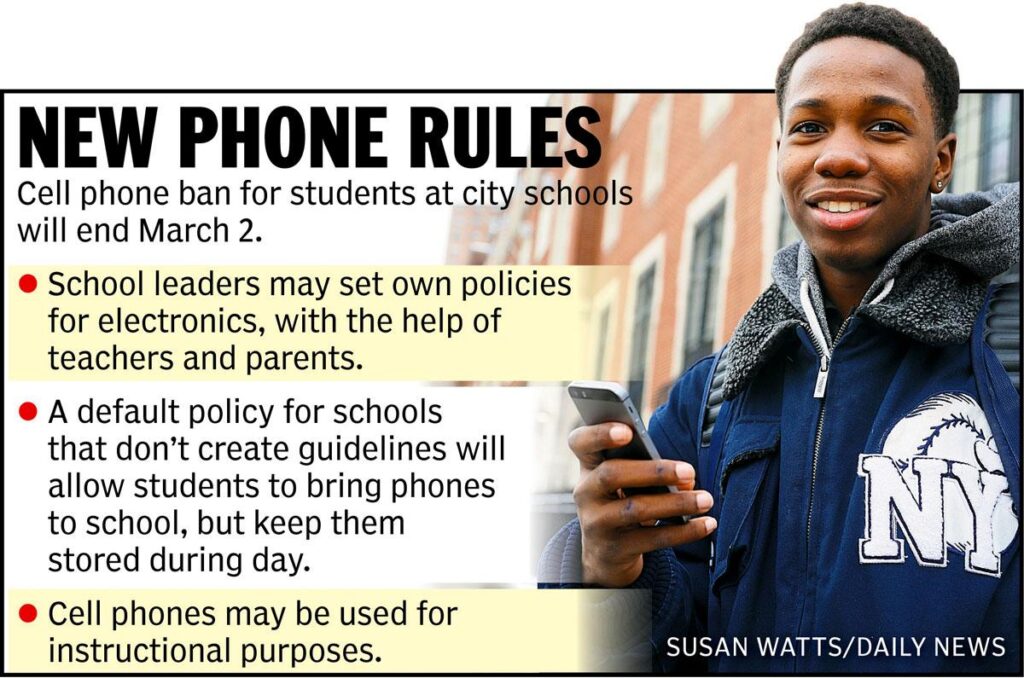NYC Public Schools Introduce Comprehensive Cellphone Ban to Enhance Learning
Transforming Classroom Focus Through a New Cellphone Policy
Beginning this September, New York City’s public school system will implement a strict prohibition on cellphone use during instructional hours. This measure is designed to curb distractions and foster a more immersive educational experience for students. By limiting access to mobile devices, schools aim to encourage deeper engagement with coursework and improve academic outcomes.
Educators anticipate that this policy will significantly reduce interruptions caused by texting, social media, and mobile gaming, thereby cultivating a more respectful and attentive classroom atmosphere. Advocates emphasize that the ban will also promote richer interpersonal communication among students and between students and teachers. However, some stakeholders acknowledge the challenges of adapting to a reduced reliance on technology during the school day.
- Minimized distractions: Encourages focused attention on lessons without multitasking
- Enhanced communication: Fosters direct interaction and collaboration
- Clear enforcement: Established rules and consequences to ensure fairness
- Permitted exceptions: Accommodations for emergencies and special needs
| Advantage | Anticipated Result |
|---|---|
| Fewer Distractions | Improved test performance and retention of material |
| Stronger Social Skills | Better teamwork and communication among peers |
| Respectful Learning Environment | Reduced interruptions and enhanced teacher authority |
Implementation and Enforcement Strategy for the Cellphone Restriction
To ensure the cellphone ban is effectively upheld, NYC schools will adopt a structured enforcement framework starting this fall. Staff will receive detailed instructions on monitoring compliance, emphasizing positive reinforcement and clear communication over harsh penalties. Students will be required to keep their devices stored away—either in lockers or backpacks—during class time.
When violations occur, a tiered response system will be applied consistently across all schools. Initial infractions will prompt verbal reminders, escalating to temporary confiscation if necessary. Persistent noncompliance will involve parental outreach and potentially scheduled meetings to address behavioral concerns. This approach aims to balance discipline with understanding, reinforcing the importance of maintaining a distraction-free learning space.
| Stage | Response | Details |
|---|---|---|
| 1 | Verbal Reminder | Polite prompt to put the phone away |
| 2 | Temporary Device Hold | Phone kept until class ends |
| 3 | Parent Contact | Notification after repeated offenses |
| 4 | Family Meeting | Discussion involving student, parents, and staff |
Community Perspectives: Parents, Educators, and Students Weigh In
Parents have expressed a blend of support and apprehension regarding the new cellphone restrictions. Many applaud the initiative’s potential to enhance concentration and academic achievement, while others voice concerns about emergency communication and the need for clear protocols to maintain safety and parental peace of mind.
Teachers generally endorse the policy, anticipating a calmer, more focused classroom environment. They emphasize the necessity of consistent enforcement and adequate resources to ensure the ban’s effectiveness. Conversely, students show mixed reactions: some welcome the break from constant digital connectivity, whereas others feel the ban limits their autonomy and social interaction during school hours.
- Teachers: 78% support the ban, citing improved classroom management
- Students: 42% view the ban as restrictive; 40% believe it will boost focus
- Parents: 62% favor the policy but request clearer emergency communication plans
| Group | Key Opinions | Main Concerns |
|---|---|---|
| Parents | Supportive of focus improvements; cautious about emergency access | Ensuring safety and communication during school hours |
| Teachers | Positive about reduced distractions; need for enforcement consistency | Uniform application of rules and support |
| Students | Divided between relief and feeling restricted | Maintaining social connections during the day |
Strategies for Students to Thrive Without Constant Phone Access
Adjusting to a school day without frequent phone use may initially be challenging for many students, but it also presents an opportunity to cultivate healthier habits and more meaningful social interactions. Students can enhance their experience by actively engaging with peers during breaks and participating in group activities that encourage collaboration.
Utilizing traditional tools like physical planners or notebooks can help students manage their schedules and reduce reliance on digital reminders. Additionally, involvement in extracurricular programs such as sports teams, art clubs, or debate groups can foster community and teamwork without the distractions of screens.
To maintain social connections without phones, students might consider the following approaches:
- Organize regular in-person gatherings: Schedule meet-ups or study groups to stay connected
- Leverage school communication channels: Use email, bulletin boards, and announcements to stay informed
- Engage in offline interests: Pursue hobbies that encourage face-to-face interaction and creativity
| Suggestion | Benefit |
|---|---|
| Physical Planner | Decreases dependence on phones for organization |
| Scheduled Social Activities | Strengthens friendships and peer support |
| School Communication Tools | Ensures students remain informed and engaged |
| Extracurricular Participation | Builds teamwork skills and focus |
Final Thoughts on NYC’s Cellphone Ban in Schools
As New York City public schools roll out this cellphone ban, the community will be watching closely to assess its effects on student focus and classroom dynamics. While the policy’s primary goal is to reduce distractions and enhance learning, its ultimate success will hinge on consistent enforcement, clear communication, and the collective support of students, parents, and educators. Ongoing dialogue and adaptability will be essential as the city embraces this significant shift in educational policy.













